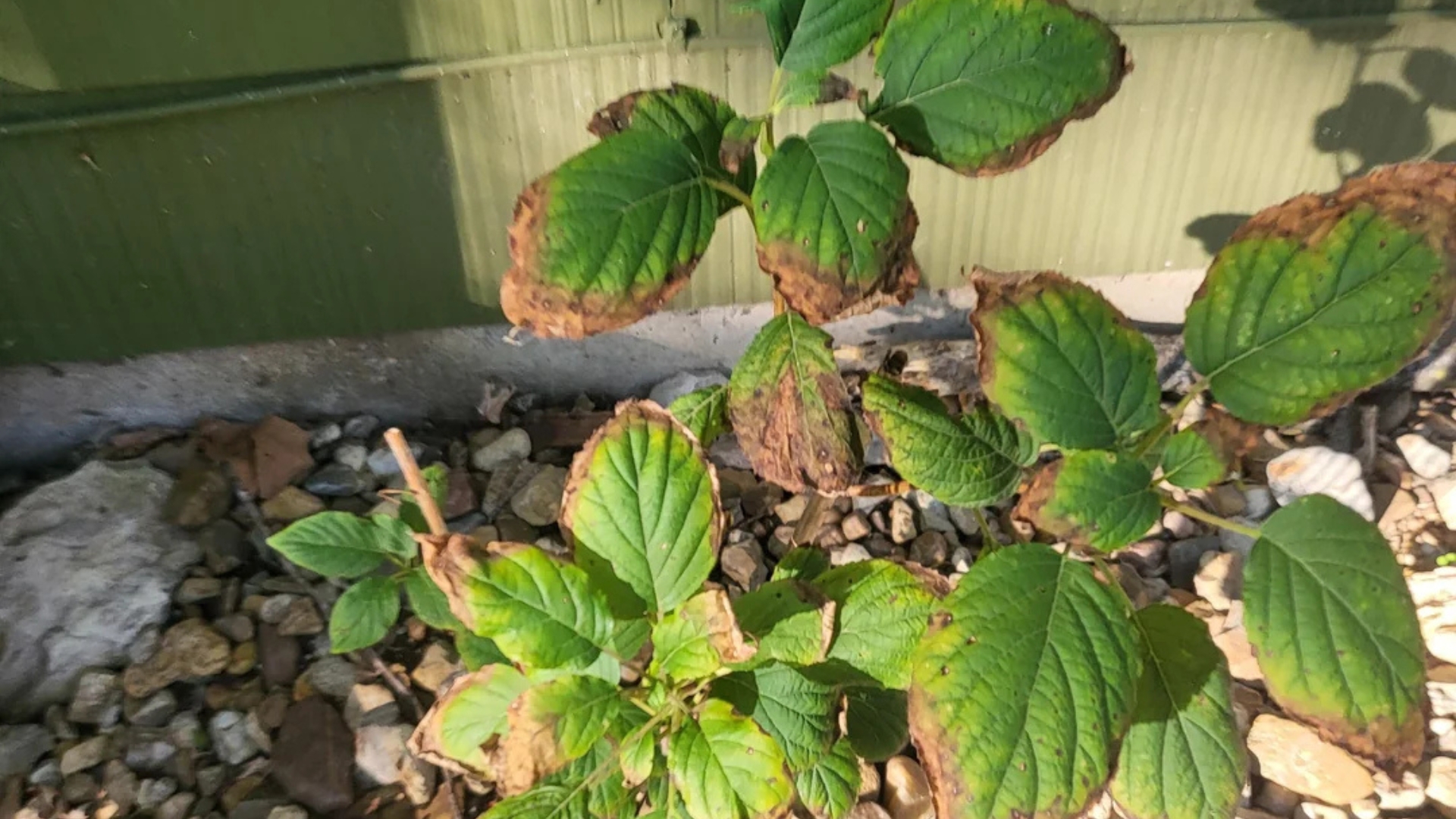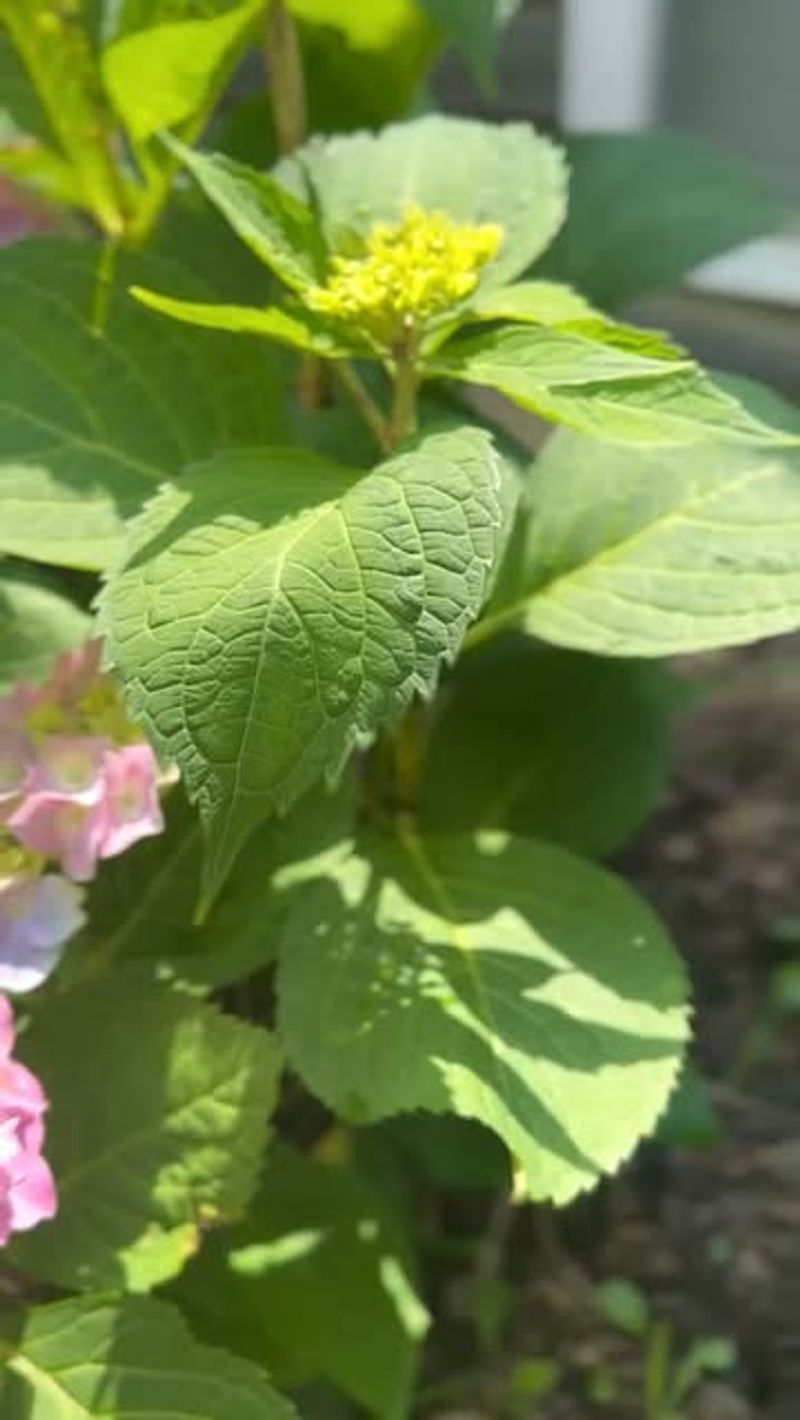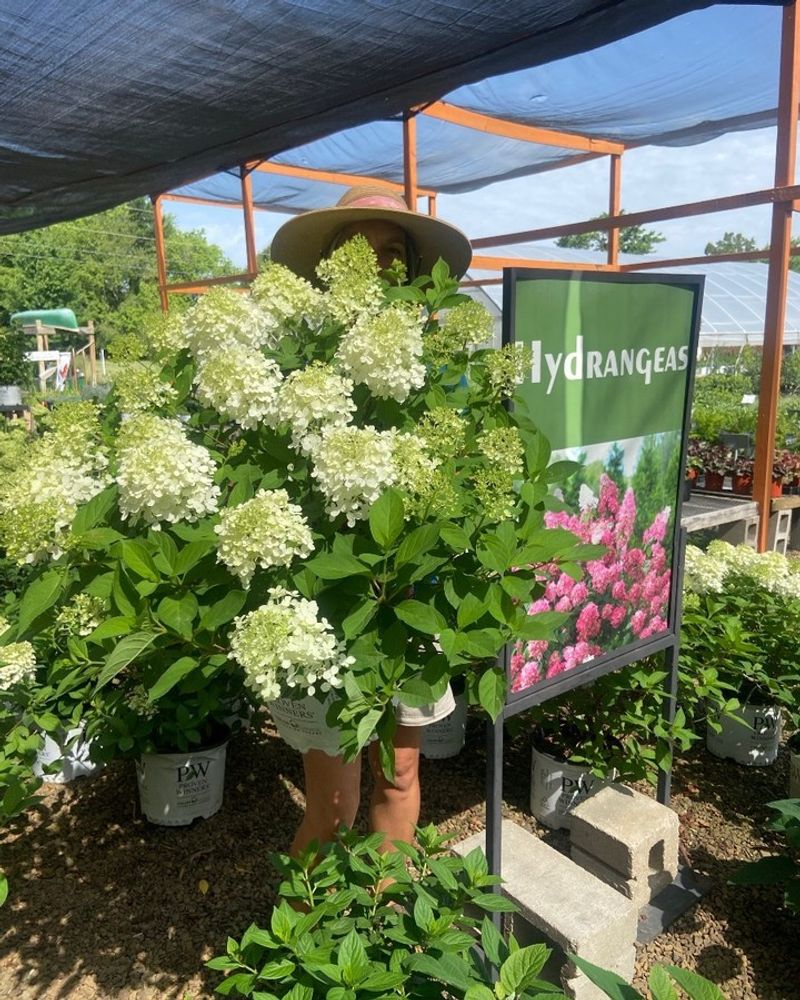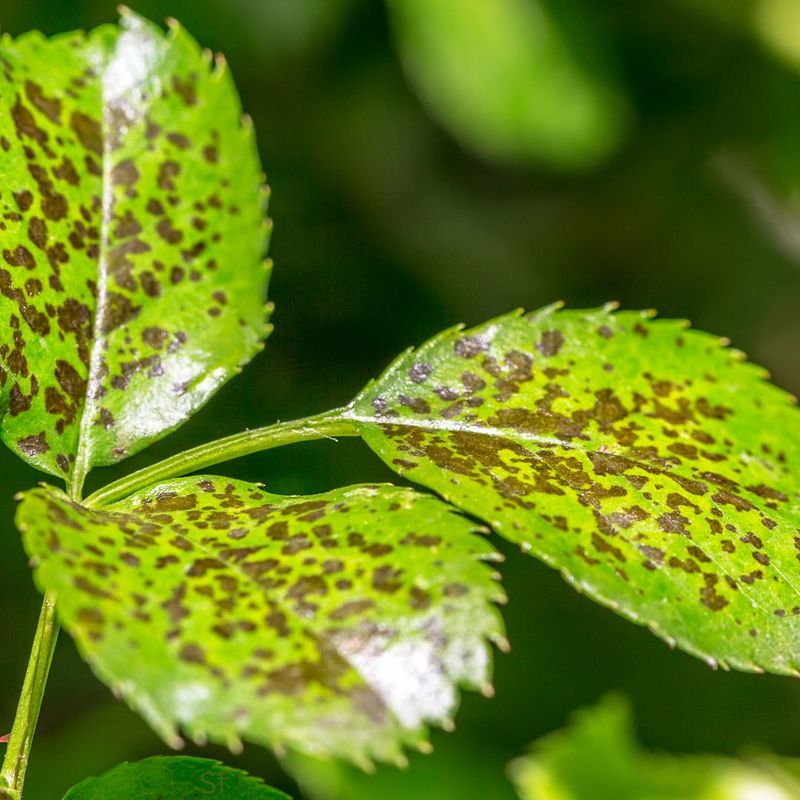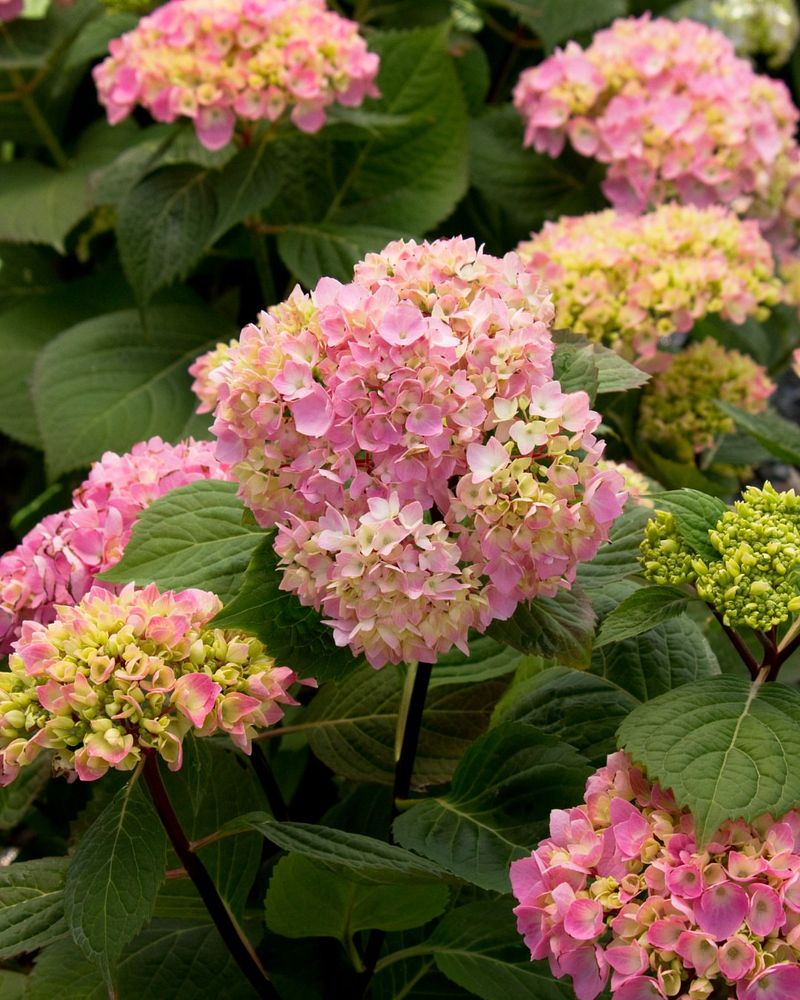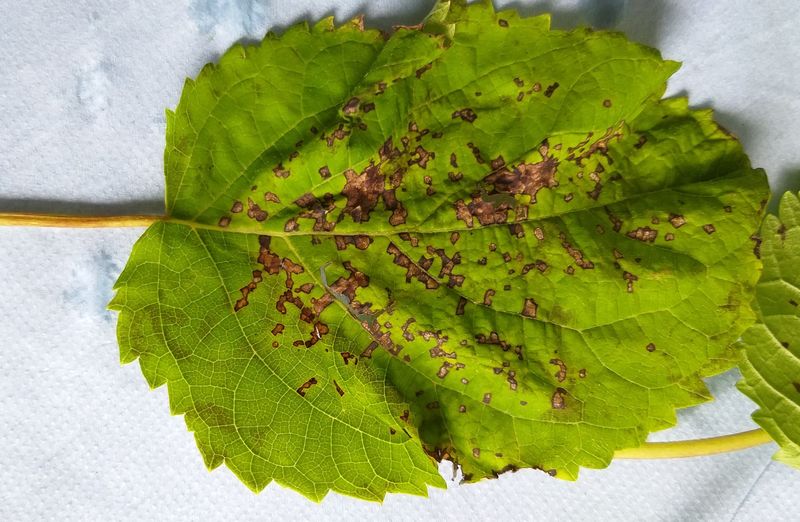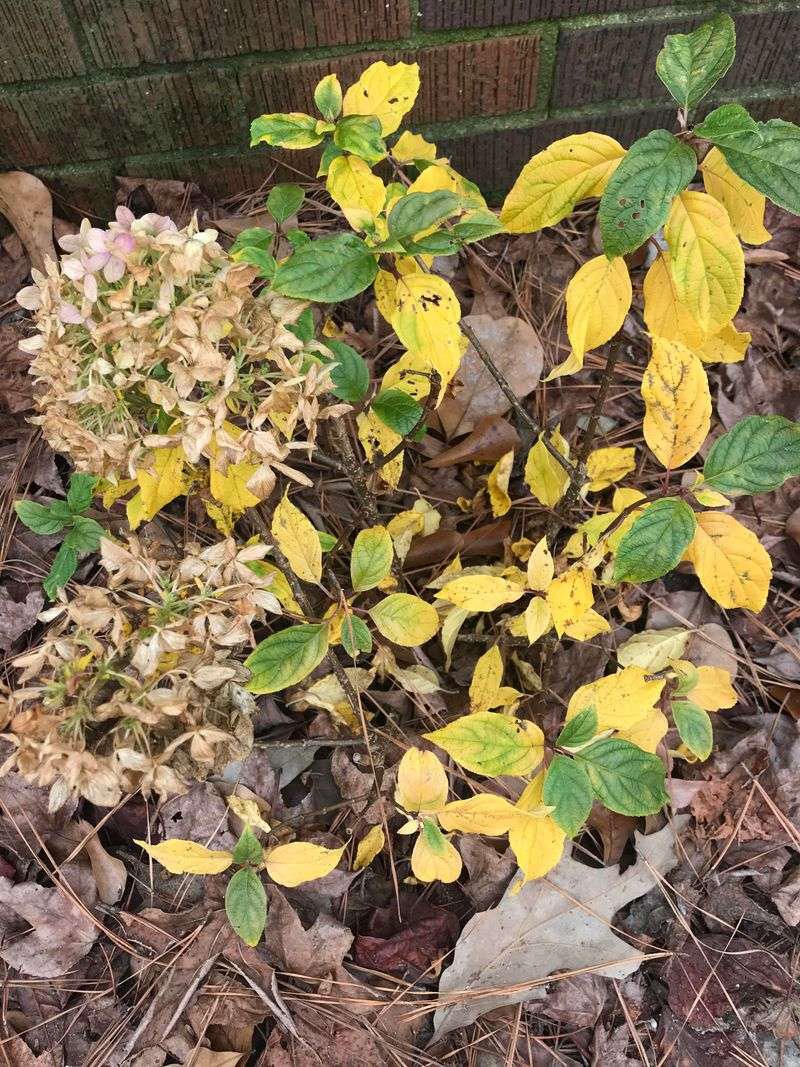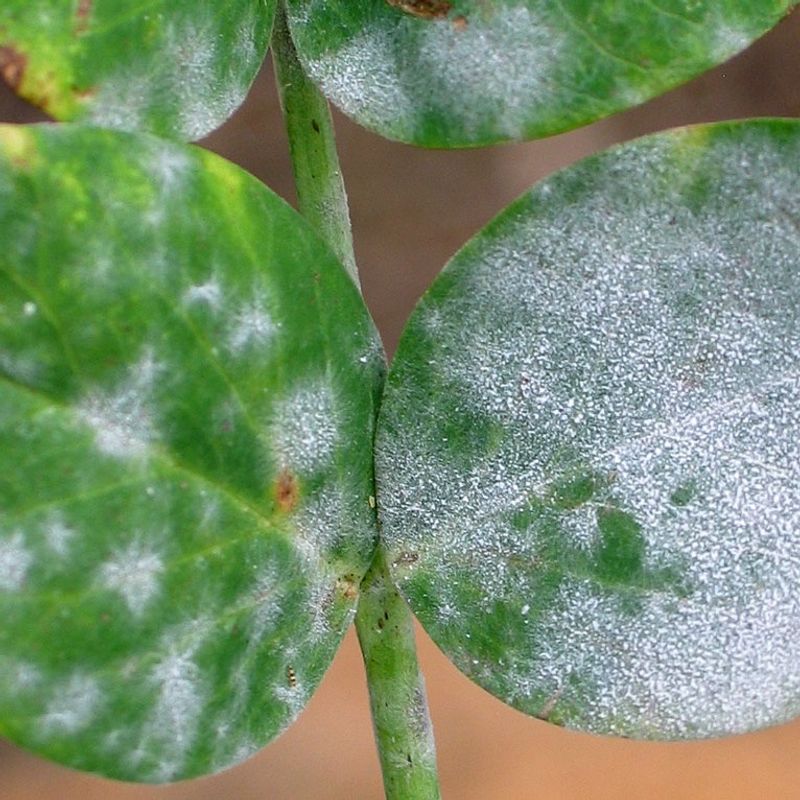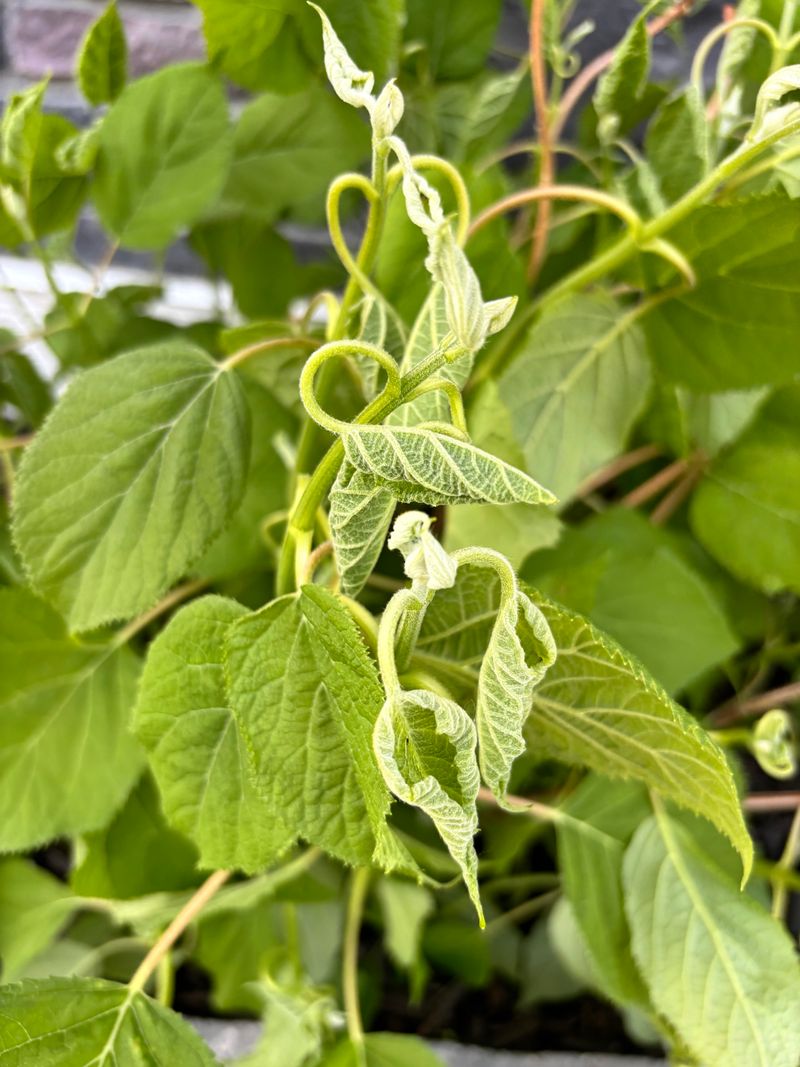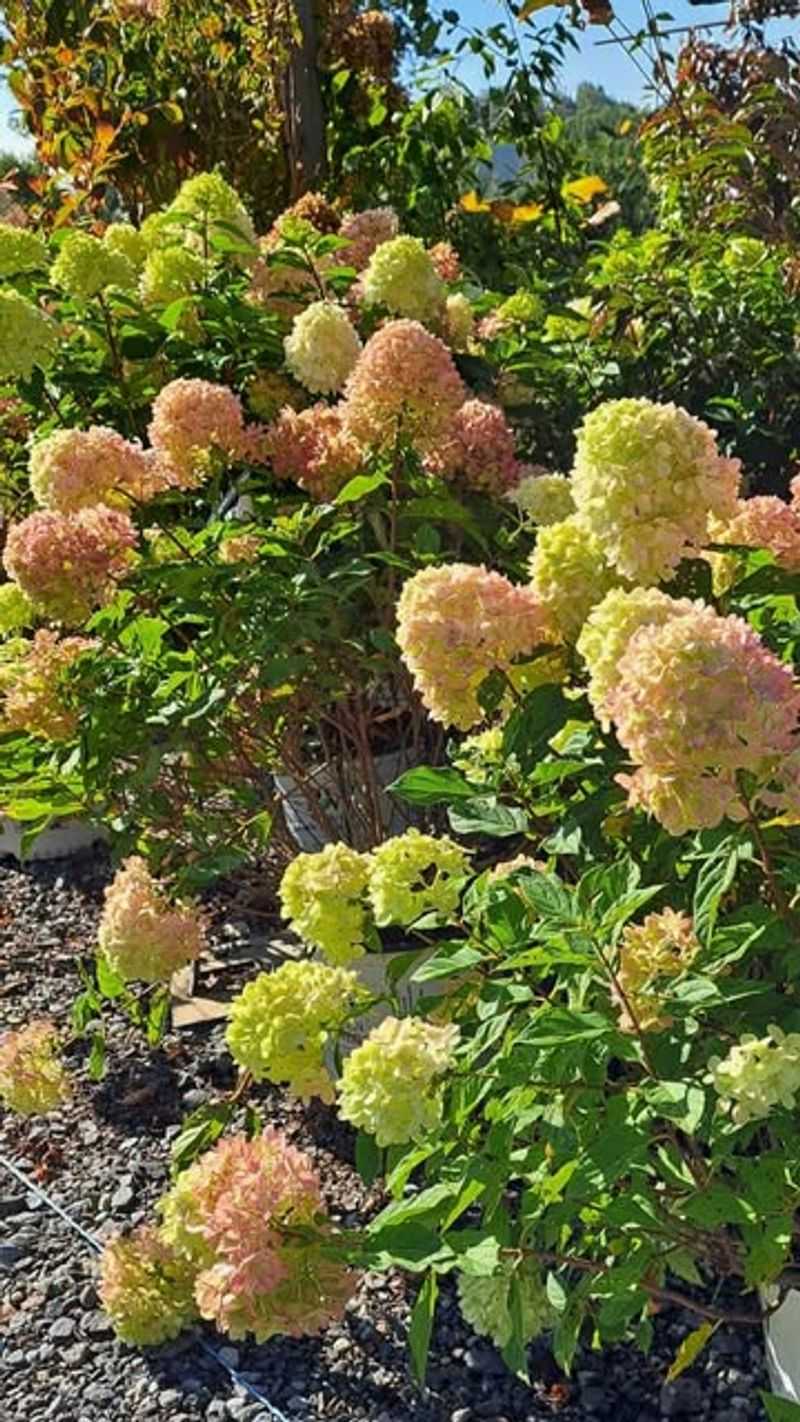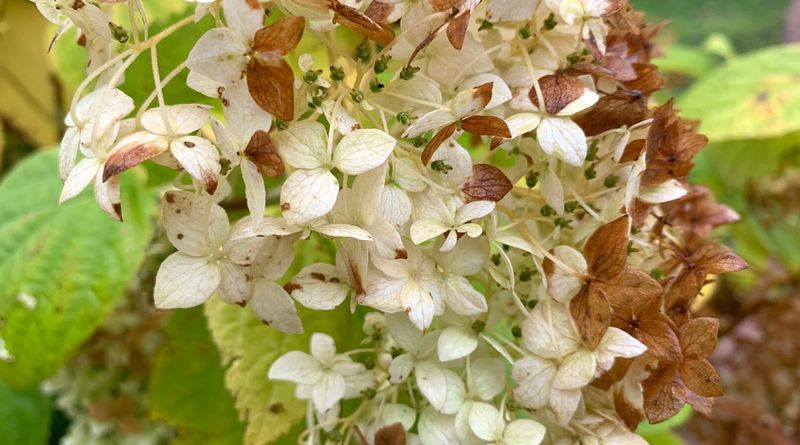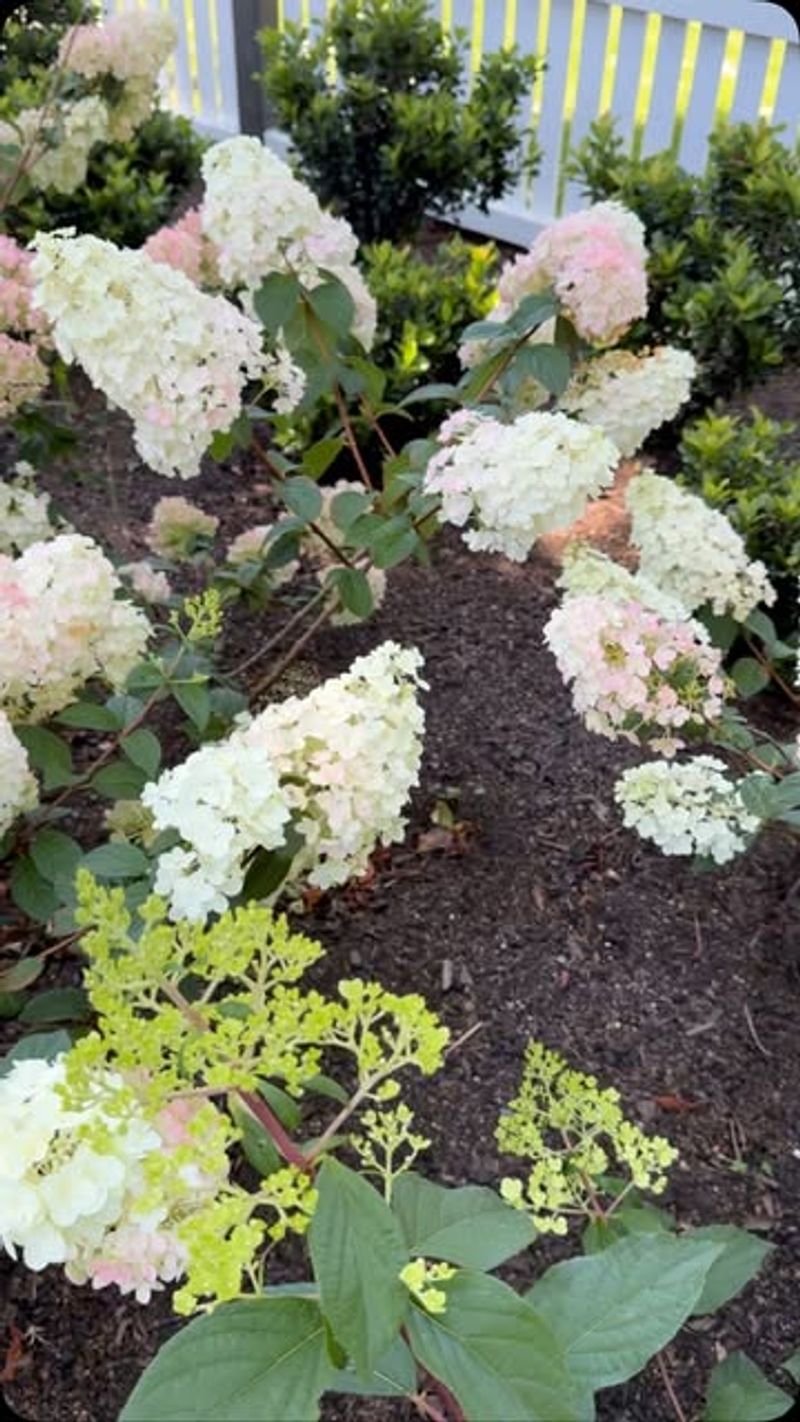Browning leaves on a hydrangea can feel like a gardening mystery—and a frustrating one at that. I’ve seen it happen in scorching sun, after a cold snap, or even when I thought I was doing everything right. The good news? Brown leaves are usually your plant’s way of waving a red flag, and most of the time, the fix is easier than you’d think.
From watering issues to hidden pests, here are 15 reasons your hydrangea might be struggling—plus the best ways to bring it back to life.
1. Drought Stress
Hydrangeas get thirsty! When they don’t receive enough water, the edges of their leaves turn brown and crispy while curling inward. This classic symptom appears first on newer growth.
Give your plant a deep watering twice weekly during hot weather. Apply water directly to the soil rather than the leaves. Adding a 2-3 inch layer of mulch around the base helps retain moisture and keeps roots cool.
2. Sunburn Damage
Too much direct sunlight scorches hydrangea leaves, creating brown patches that look almost bleached in the center. Morning sun works fine, but intense afternoon rays can be brutal on these woodland-loving plants.
Relocate potted hydrangeas to shadier spots or install shade cloth during peak summer heat. For planted specimens, consider adding taller companion plants on the western side to provide natural afternoon protection.
3. Fungal Leaf Spot
Small brown spots with purple-reddish rings signal fungal infection. Left untreated, these spots expand and merge, killing entire leaves. Wet conditions and poor air circulation make this problem worse.
Remove and destroy affected leaves immediately. Apply a fungicide labeled for leaf spot diseases according to package directions. Water at the base of plants rather than overhead, and space hydrangeas properly to promote air movement between plants.
4. Fertilizer Burn
Overzealous feeding leads to fertilizer burn, showing up as crispy brown leaf margins. The salts in fertilizers draw moisture from plant tissues when applied too heavily.
Flush the soil thoroughly with clean water to dilute excess nutrients. Switch to a slow-release fertilizer specifically formulated for acid-loving plants. Always follow package directions for application rates, and never fertilize during drought conditions.
5. Bacterial Leaf Spot
Unlike fungal spots, bacterial infections create water-soaked lesions that turn reddish-brown with yellow halos. The damaged areas often fall out, leaving holes in the leaves.
Unfortunately, bacterial infections can’t be cured. Remove infected leaves and improve air circulation. Avoid overhead watering that spreads bacteria between plants. Apply copper-based bactericides as a preventative measure for unaffected plants.
6. Improper pH Levels
Hydrangeas are pH sensitive plants. When soil pH isn’t right, they struggle to absorb nutrients properly, resulting in browning leaves with yellowed veins.
Test your soil pH using an inexpensive kit from garden centers. Most hydrangeas prefer slightly acidic soil (5.5-6.5). Add sulfur to lower pH or lime to raise it. Remember that blue-flowering varieties need more acidic conditions than pink ones.
7. Winter Damage
Harsh winter winds and freezing temperatures can damage hydrangea tissues. Come spring, you’ll notice brown, papery leaves that never green up properly.
Prune away dead branches in early spring once new growth appears. Be patient—some varieties regrow from the base even when they look completely dead. For future protection, create a wind barrier with burlap screens and add a thick mulch layer around the base before winter arrives.
8. Powdery Mildew
White powdery coating on leaves eventually leads to brown spots and curling. This fungal disease thrives in humid conditions with poor air circulation.
Improve airflow by thinning interior branches. Apply neem oil or a fungicide specifically labeled for powdery mildew. Water plants in the morning so leaves dry quickly. Resistant hydrangea varieties like ‘Twist-n-Shout’ and ‘Penny Mac’ make good replacements for repeatedly infected plants.
9. Transplant Shock
Recently moved hydrangeas often develop brown leaves as they adjust to new conditions. Root disturbance during transplanting limits water uptake, causing drought-like symptoms.
Provide extra water for the first season after transplanting. Mist leaves during hot weather to reduce moisture loss. Remove severely damaged leaves but leave slightly browning ones attached—they’re still making food for the recovering plant.
10. Herbicide Damage
Weed killers that drift onto hydrangeas cause twisted, cupped leaves with unusual brown patterns. Even organic herbicides can damage these sensitive shrubs.
Stop using herbicides near hydrangeas immediately. Rinse affected plants with clean water if exposure just occurred. Future growth should emerge normally if the damage wasn’t severe. Consider hand-weeding or mulching heavily around hydrangeas instead of chemical weed control.
11. Root Rot
Constantly soggy soil leads to root rot, where leaves turn yellow then brown while remaining limp rather than crispy. The whole plant often looks wilted even with moist soil.
Improve drainage immediately by adding organic matter to heavy clay soils. For potted plants, ensure containers have adequate drainage holes. Reduce watering frequency and consider relocating plants to raised beds if your garden has poor drainage.
12. Iron Deficiency
Yellow leaves with green veins that gradually develop brown spots signal iron chlorosis. This happens when iron becomes unavailable in alkaline soils.
Apply iron sulfate or chelated iron according to package directions. For a quick fix, dissolve 1 tablespoon of Epsom salts in a gallon of water and apply to roots. Long-term, work on acidifying your soil with composted pine needles or coffee grounds.
13. Spider Mite Infestation
Tiny spider mites suck plant juices, causing stippled yellow spots that turn brown. Look for fine webbing on leaf undersides—a telltale sign of these nearly invisible pests.
Spray plants forcefully with water to dislodge mites. Apply insecticidal soap or horticultural oil, making sure to coat leaf undersides where mites hide. Predatory mites offer natural control for severe infestations.
14. Salt Damage
Road salt splash or salty irrigation water creates burned leaf margins similar to fertilizer burn. Coastal gardens face this issue from salt spray carried by winds.
Rinse foliage with fresh water after exposure to salt spray. Create physical barriers like burlap screens between plants and roads during winter. For chronically salty soil, apply gypsum annually to help displace sodium, and water deeply when possible to flush salts below the root zone.
15. Natural Aging
Sometimes browning simply indicates normal leaf aging. Lower and interior leaves naturally brown and drop as the plant directs energy to newer growth.
No treatment needed for this natural process! Simply remove fully browned leaves to keep plants tidy. Focus your attention on any browning affecting new growth or occurring across the entire plant, as these indicate actual problems requiring intervention.

